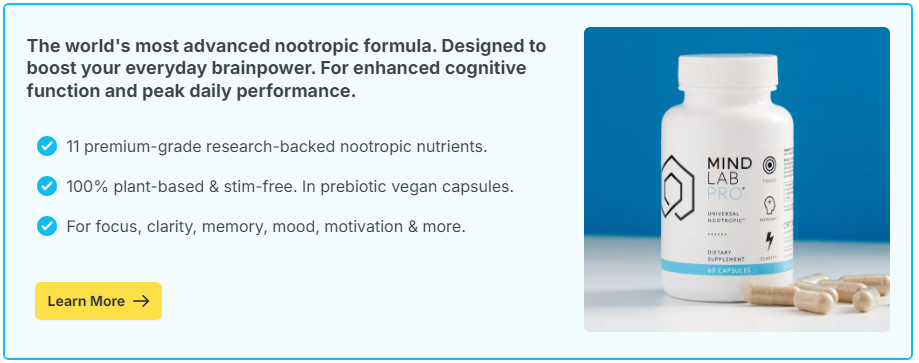
You’re deep in thought, staring at a screen, when you realize you’ve been chewing on your straw for five minutes. Or maybe it’s the end of a pen, the drawstring from your hoodie, or a necklace chain. It’s not just idle behavior—it’s something your brain might be using to help you concentrate.
Turns out, chewing on objects like straws, pens, or even gum may offer real cognitive benefits. While it’s often chalked up to nervous energy or distraction, this kind of oral motor activity—sometimes called “oral fidgeting”—can regulate attention, increase alertness, and even lower anxiety.
So before you write off this habit as weird or childish, let’s chew over the brain science behind it.
Contents
- The Mouth-Brain Connection
- Chewing and Attention Regulation
- Oral Fixation or Sensory Strategy?
- Why a Straw (or Pen) Works Better Than Gum for Some
- The Role of Deep Pressure Input
- Chewing as a Stress-Relief Mechanism
- Should We Embrace or Curb the Habit?
- Alternatives to Chewing That Offer Similar Benefits
- Can Nootropics Enhance Focus Alongside Chewing Habits?
The Mouth-Brain Connection
Chewing engages a complex network of sensory and motor pathways that link directly to the brainstem and midbrain. This includes:
- Trigeminal nerve stimulation: Provides sensory input from the jaw and mouth
- Brainstem arousal pathways: Help regulate alertness and sensory filtering
- Prefrontal cortex: Monitors attention and working memory
The rhythmic, repetitive motion of chewing sends feedback to the brain, which can influence emotional and cognitive states—especially under conditions of stress or cognitive overload.
Chewing and Attention Regulation
One of the clearest benefits of oral activity is its effect on attention control. Research has shown that chewing gum during mentally demanding tasks can increase alertness and reduce reaction time.
Why This Works
- Chewing activates the reticular activating system, which helps maintain wakefulness
- It provides a low-level physical outlet that prevents overactivation of stress circuits
- It can reduce the urge to engage in more disruptive fidgeting (e.g., phone checking)
Essentially, chewing keeps part of your brain gently occupied, freeing up cognitive resources for sustained mental effort.
Oral Fixation or Sensory Strategy?
Psychologists used to frame chewing habits as “oral fixations,” especially in the Freudian tradition. Today, a more functional view sees them as part of sensory modulation—your brain’s way of managing input and maintaining regulation.
This Is Especially True For:
- Children with ADHD or sensory processing differences
- People under chronic stress
- Anyone doing high-focus tasks (e.g., writing, coding, studying)
In these contexts, chewing may help “gate” distractions by providing a repetitive, self-soothing stimulus.
Why a Straw (or Pen) Works Better Than Gum for Some
Chewing gum is a popular focus aid—but for some, chewing on a straw, pen, or similar object is more effective. Here’s why:
- Texture variation: Firm objects provide deeper pressure feedback
- More control: You can adjust pressure, angle, and location
- No flavor fatigue: Gum loses taste, while neutral objects don’t change
This type of chewing engages the jaw muscles more forcefully, providing stronger proprioceptive input—something the nervous system often craves when stressed or distracted.
The Role of Deep Pressure Input
Chewing offers what’s called oral proprioceptive input—a kind of deep pressure stimulation. This is the same principle behind weighted blankets, tight hugs, or deep touch: it tells the nervous system, “You’re grounded. You’re here.”
This input can help calm the sympathetic nervous system (which governs fight-or-flight) and activate the parasympathetic system (rest and digest), leading to better emotional regulation and sustained attention.
Chewing as a Stress-Relief Mechanism
Many people chew on objects when they’re nervous, tense, or deep in thought. This isn’t just habit—it may be an intuitive coping strategy.
Stress Reduction Through Jaw Movement
- Chewing has been shown to lower cortisol, the body’s primary stress hormone
- It provides a repetitive motor pattern that induces calm
- It may interrupt looping thoughts or overthinking patterns
Ever wonder why people chew pens during tests or bite lip balm caps during Zoom meetings? Their brains may be using the jaw as a sensory tool for focus and regulation.
Should We Embrace or Curb the Habit?
While chewing on objects isn’t always socially encouraged, there’s growing recognition—especially in educational and neurodivergent communities—that it serves a real function.
If it’s:
- Safe (not damaging to teeth or ingesting harmful material)
- Private or contextually appropriate
- Regulatory rather than compulsive
…then it may be worth keeping as part of a personal focus toolkit.
Alternatives to Chewing That Offer Similar Benefits
If chewing on a straw isn’t practical, you can get similar sensory and cognitive regulation from:
- Chewable jewelry (silicone “chewelry” designed for adults and kids)
- Crunchy snacks (like carrots or apple slices during study sessions)
- Minty gum for arousal + mild sensory input
- Tactile fidgets (like kneaded erasers or stress putty)
Can Nootropics Enhance Focus Alongside Chewing Habits?
Yes. While chewing offers bottom-up sensory regulation, nootropics can provide top-down support by improving executive function, attention span, and mental clarity.
Nootropics That May Pair Well with Chewing for Focus
- Citicoline: Enhances cognitive endurance and focus
- L-Theanine: Promotes calm focus and reduces mental overstimulation
- Rhodiola Rosea: Supports stress resilience and alertness under pressure
- Lion’s Mane Mushroom: Supports long-term cognitive growth and adaptive thinking
Together, nootropics and sensory tools like oral input can help build a personalized, sustainable attention strategy.
Chewing on a straw might look like a quirk—but beneath the surface, it’s a highly sophisticated act of sensory self-regulation. Your brain knows what it needs. And sometimes, what it needs isn’t silence or stillness—but rhythm, pressure, and just a bit of bite.
So if chewing helps you think straighter, stay calmer, or focus longer, don’t apologize. You’re not fidgeting mindlessly—you’re tuning your nervous system with an ancient, subconscious tool. One chew at a time.

